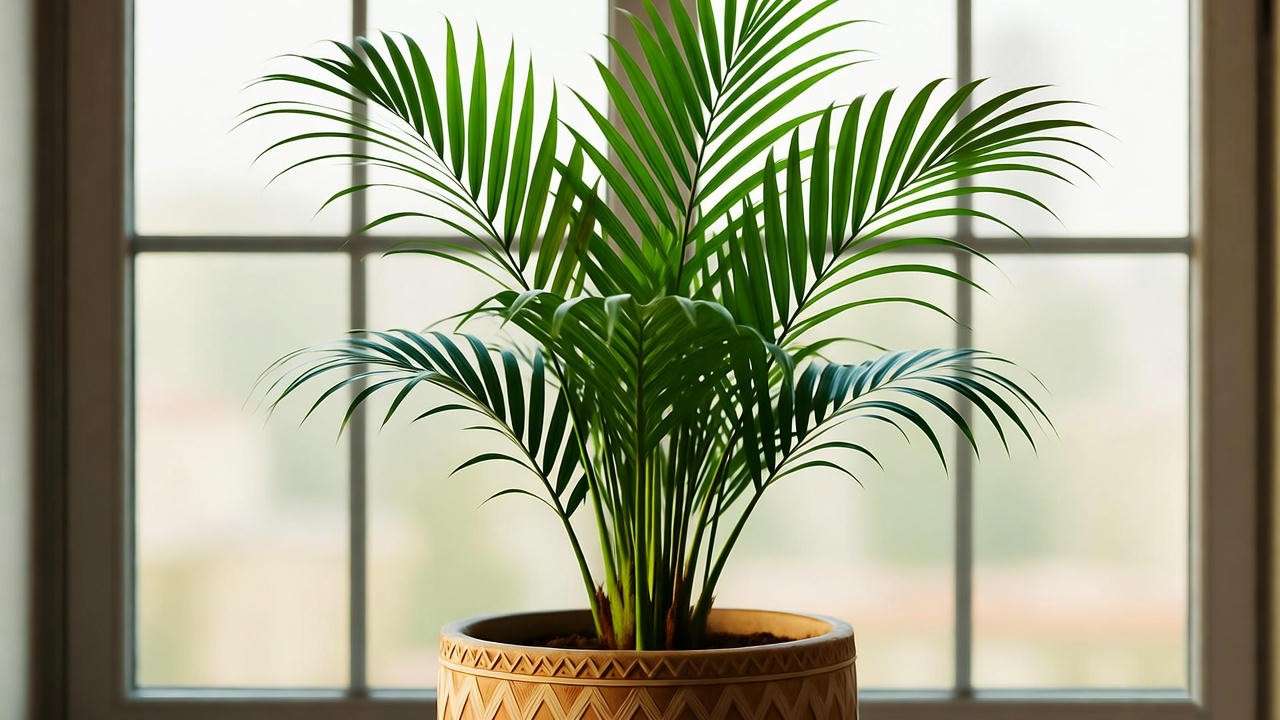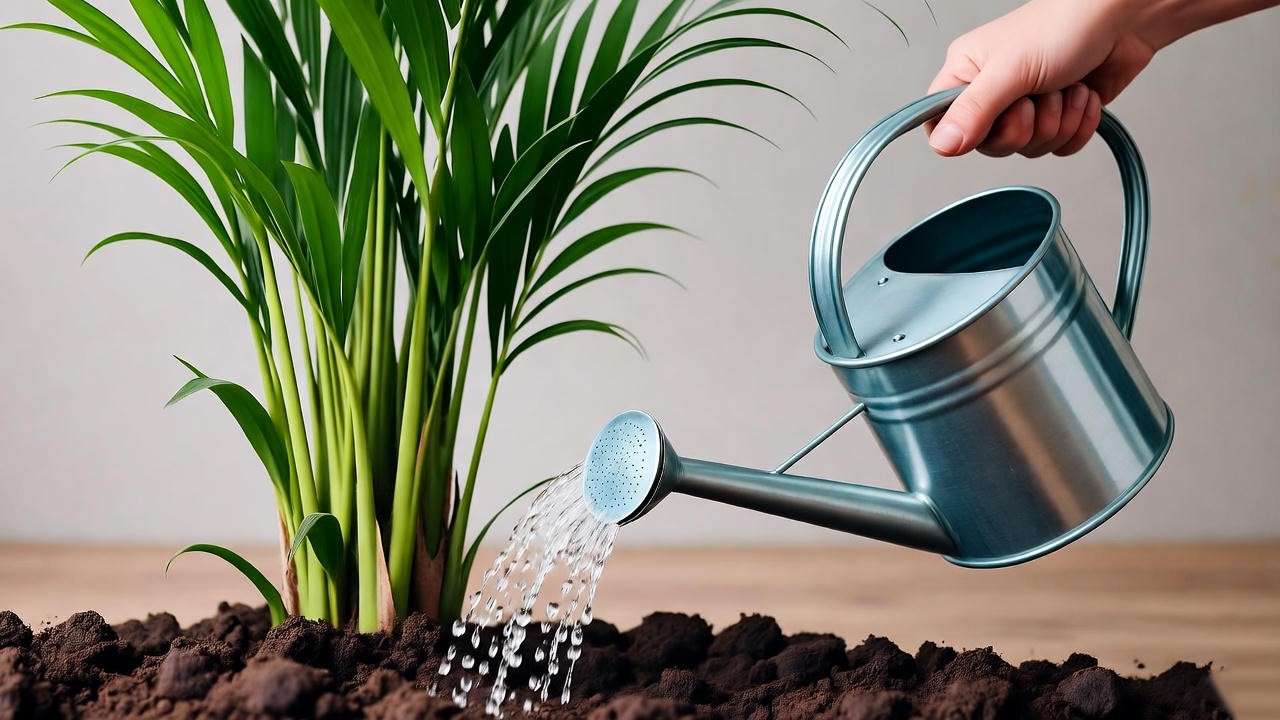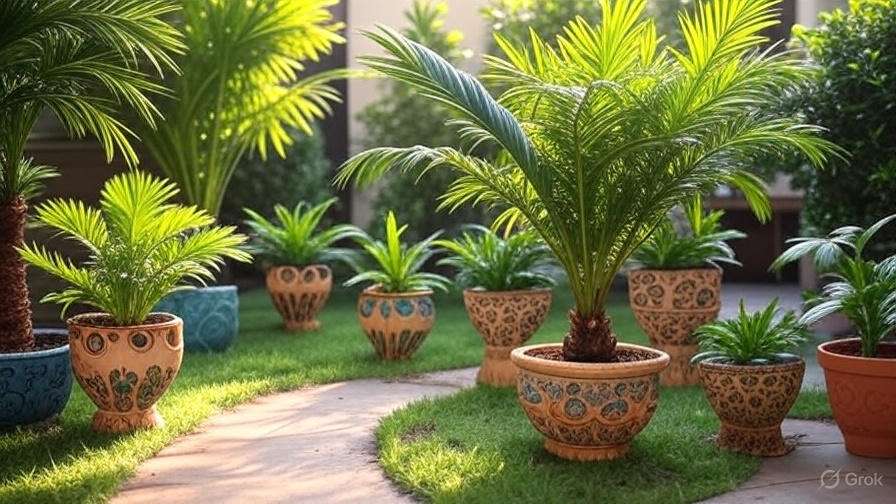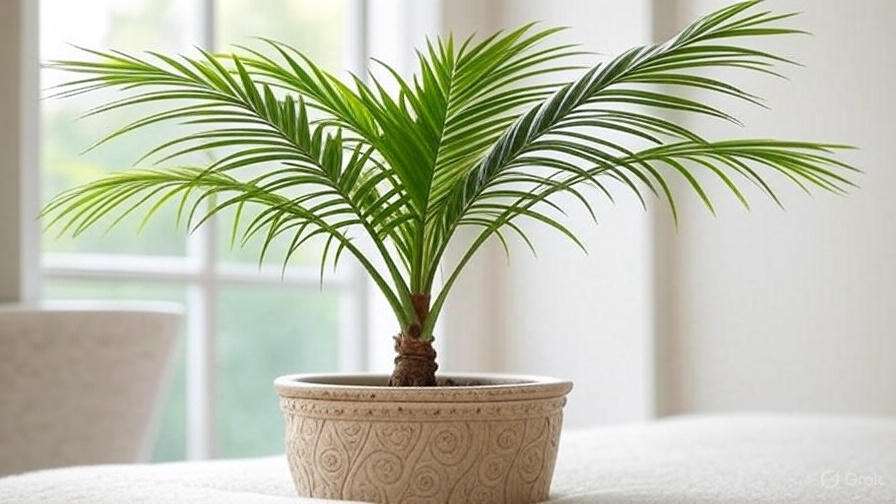Imagine a lush, tropical paradise right in your backyard or living room, with a majestic royal palm plant stealing the show! 🌿 Whether you’re a seasoned gardener or a newbie plant parent, the royal palm (Roystonea regia) brings unmatched elegance with its towering trunk and vibrant green fronds. But how do you ensure this iconic tropical beauty thrives? This comprehensive guide dives deep into expert care tips, troubleshooting solutions, and advanced techniques to help your royal palm flourish. Backed by years of horticultural expertise, we’ll cover everything you need to grow a stunning royal palm plant, indoors or out, with confidence. Let’s get started! 🚀
1. Understanding the Royal Palm Plant 🌴
1.1 What Is a Royal Palm Plant?
The royal palm plant, scientifically known as Roystonea regia, is a tropical icon native to regions like Cuba, Mexico, and the Caribbean. Renowned for its statuesque trunk and lush, feathery fronds, this palm can grow up to 70 feet tall outdoors, though indoor varieties are typically smaller, reaching 6–12 feet in pots. Its smooth, grayish trunk and vibrant green canopy make it a favorite for landscaping and home décor. Whether lining a driveway or brightening a corner of your living space, the royal palm adds a touch of tropical sophistication.

1.2 Why Choose a Royal Palm Plant?
Why opt for a royal palm? Beyond its striking aesthetic, this plant offers practical benefits. Indoors, it acts as a natural air purifier, removing toxins and boosting humidity. Outdoors, it provides ample shade and enhances curb appeal. Its relatively low maintenance needs—when grown in the right conditions—make it ideal for busy plant enthusiasts. Plus, its ability to adapt to both indoor and outdoor environments makes it versatile for various climates and spaces. With proper care, a royal palm becomes a long-term investment in beauty and functionality. 🌞
1.3 Varieties of Royal Palm Plants
Royal palms come in several varieties, each with unique traits. The Cuban Royal Palm (Roystonea regia) is the most common, prized for its fast growth and classic look. The Florida Royal Palm (Roystonea elata), native to the southeastern U.S., is slightly shorter but equally stunning. For indoor growers, dwarf or container-adapted varieties are popular due to their manageable size. Expert Insight: Choose the Cuban Royal Palm for outdoor landscapes in warm climates (USDA zones 10–11) and dwarf varieties for indoor settings or smaller patios.
2. Ideal Growing Conditions for Royal Palm Plants ☀️
2.1 Light Requirements
Royal palms thrive in bright conditions. Outdoors, they prefer full sun, soaking up at least 6–8 hours of direct sunlight daily. Indoors, place your royal palm near a south-facing window with bright, indirect light to mimic its natural habitat. Too little light can cause slow growth and pale fronds, while excessive direct sun indoors may scorch leaves. Tip: If you notice elongated, weak fronds, move your plant to a brighter spot gradually to avoid shock.
2.2 Temperature and Humidity
Royal palms love warmth, with an ideal temperature range of 70–85°F (21–29°C). They can tolerate brief dips to 60°F (15°C) but struggle in colder climates. For indoor plants, maintain high humidity (50–60%) to prevent leaf tip browning. Use a humidifier, pebble tray, or daily misting to boost moisture levels. Outdoors, royal palms naturally adapt to humid tropical climates. Practical Advice: In dry indoor environments, group your royal palm with other plants to create a microclimate with higher humidity.
2.3 Soil and Potting
The right soil is crucial for royal palm health. Opt for a well-draining mix with equal parts potting soil, sand, and perlite to ensure proper drainage and aeration. A slightly acidic to neutral pH (6.0–7.0) is ideal. For potted palms, choose a container with drainage holes to prevent waterlogging. Expert Tip: When potting, ensure the root ball sits level with the soil surface to avoid rot. For outdoor planting, amend clay-heavy soils with organic matter to improve drainage.

3. Step-by-Step Care Guide for Royal Palm Plants 🌱
3.1 Watering Your Royal Palm
Watering is a balancing act for royal palms. Allow the top 1–2 inches of soil to dry out between waterings for potted plants, and water outdoor palms deeply once or twice weekly, depending on rainfall. Overwatering is a common mistake, leading to root rot, so ensure proper drainage. Warning: Yellowing lower fronds or soggy soil are signs of overwatering. If this happens, reduce watering and check for root damage. In contrast, underwatered palms may show wilting or browning tips—adjust your schedule accordingly.

3.2 Fertilizing for Optimal Growth
To keep your royal palm vibrant, fertilize monthly during the growing season (spring and summer) with a balanced, slow-release fertilizer (e.g., 10-10-10 NPK). Avoid over-fertilizing, which can cause salt buildup and leaf burn. In fall and winter, reduce or stop fertilizing as growth slows. Expert Insight: Organic options like compost tea or fish emulsion work well for eco-conscious growers, providing nutrients without synthetic chemicals. Always water thoroughly after fertilizing to help nutrients reach the roots.
3.3 Pruning and Maintenance
Pruning keeps your royal palm tidy and healthy. Remove dead, yellowing, or damaged fronds using clean, sharp pruning shears. Avoid cutting green fronds, as they’re essential for photosynthesis. For indoor palms, dust leaves regularly with a damp cloth to enhance light absorption and prevent pests. Tip: When pruning, wear gloves and sterilize tools to avoid spreading disease. For tall outdoor palms, consider hiring a professional arborist to safely trim higher fronds.
3.4 Repotting and Transplanting
Indoor royal palms need repotting every 2–3 years or when roots become crowded. Choose a pot 2–4 inches larger in diameter and repot in spring for minimal stress. Gently loosen the root ball, place it in fresh soil, and water thoroughly. For outdoor palms, transplanting is trickier due to their size. Dig a wide, deep hole, preserve as much root mass as possible, and water consistently for the first few months. Expert Tip: Stake newly transplanted outdoor palms to prevent wind damage.
4. Common Problems and Solutions 🛠️
4.1 Pests and Diseases
Royal palms are relatively pest-resistant but can attract spider mites, scale insects, and mealybugs, especially indoors. Look for webbing, sticky residue, or small white clusters on leaves. Treat infestations with neem oil or insecticidal soap, applied weekly until pests are gone. Fungal diseases like leaf spot or root rot may occur in overly wet conditions. Improve air circulation and reduce watering to prevent these issues. Expert Tip: Regularly inspect leaf undersides for early pest detection.
4.2 Yellowing or Browning Fronds
Yellowing or browning fronds often signal care issues. Nutrient deficiencies (especially potassium or magnesium) can cause yellowing, so test soil and adjust fertilization. Overwatering may lead to soggy roots and browning tips, while underwatering causes crispy, dry fronds. Troubleshooting Guide: Check soil moisture, adjust light exposure, and apply a palm-specific fertilizer to correct deficiencies. If problems persist, consult a local extension service for soil testing.

4.3 Slow Growth or Stunted Development
If your royal palm isn’t growing as expected, evaluate its environment. Insufficient light, poor soil quality, or lack of nutrients are common culprits. Ensure the plant receives adequate sunlight and nutrients, and repot if roots are cramped. Solution: Move outdoor palms to a sunnier spot or prune surrounding plants to reduce shade. For indoor palms, consider supplemental grow lights during winter months.
5. Advanced Tips for Royal Palm Enthusiasts 🌟
5.1 Propagating Royal Palm Plants
Propagating a royal palm plant is a rewarding challenge for dedicated growers, though it’s primarily done through seeds due to the plant’s structure. Start by sourcing fresh seeds from a reputable supplier or a mature royal palm. Soak the seeds in warm water for 24–48 hours to soften the outer coat and improve germination. Plant them in a seed-starting mix, keeping the soil consistently moist and warm (75–85°F or 24–29°C). Germination can take 2–3 months, so patience is key. Challenge: Seeds have a low germination rate, so plant multiple to increase success. Expert Tip: Use a heat mat to maintain consistent soil temperature and cover the pot with plastic wrap to retain humidity.
Once seedlings emerge, provide bright, indirect light and gradually acclimate them to normal conditions. Transplant seedlings to individual pots when they develop 2–3 true leaves. Note: Propagation is slow, and it may take years for a seedling to resemble a mature royal palm, but the process is a fulfilling way to expand your collection.

5.2 Landscaping with Royal Palms
Royal palms are showstoppers in landscape design, perfect for creating a tropical oasis. Their tall, elegant trunks make them ideal as focal points in large gardens, along driveways, or near water features. For a cohesive look, pair royal palms with low-growing tropical plants like bird of paradise, hibiscus, or ginger for vibrant color and texture. Design Idea: Create a symmetrical row of royal palms along a pathway for a regal entrance, or plant a single palm as a centerpiece in a circular garden bed.
When landscaping, ensure proper spacing—royal palms need 15–20 feet of space to accommodate their mature canopy. Expert Insight: Combine royal palms with drought-tolerant ground covers like liriope or mondo grass to reduce maintenance and enhance visual contrast. For smaller spaces, use dwarf royal palms in decorative containers to add tropical flair to patios or courtyards.
5.3 Seasonal Care Adjustments
Royal palms require tailored care depending on the season and climate. Winter Care: In cooler climates (USDA zones 9b–10), protect outdoor royal palms from rare cold snaps by wrapping the trunk with burlap or frost cloth if temperatures dip below 40°F (4°C). For indoor palms, reduce watering and move plants away from drafty windows. Summer Care: During hot months, increase watering for outdoor palms, especially in dry regions, to prevent heat stress. Monitor indoor palms for signs of dehydration, such as drooping fronds, and mist leaves regularly.
Tip: In regions with distinct wet and dry seasons, adjust fertilization to align with rainfall patterns—more frequent in wet seasons, less in dry seasons. For year-round care, maintain a consistent environment by monitoring temperature and humidity, especially for indoor plants in controlled settings.
6. FAQs About Royal Palm Plant Care ❓
How fast do royal palm plants grow?
Royal palms grow relatively quickly in optimal conditions, adding 1–2 feet of height annually outdoors. Indoor palms grow slower due to limited light and space, typically gaining 6–12 inches per year. Ensure proper light, water, and nutrients to maximize growth.
Can royal palms thrive indoors year-round?
Yes, with proper care! Indoor royal palms need bright, indirect light, high humidity, and consistent warmth. Choose a dwarf variety for easier management and ensure adequate pot size to support root growth.
What’s the best way to prevent pests on royal palms?
Prevent pests by maintaining good air circulation, avoiding overwatering, and regularly cleaning leaves. Apply neem oil as a preventive measure every few months, especially for indoor palms prone to spider mites.
How do I know if my royal palm is healthy?
A healthy royal palm has vibrant green fronds, a firm trunk, and steady growth. Watch for warning signs like yellowing leaves, soft spots on the trunk, or pest activity, and address issues promptly.
Can I grow a royal palm in a cold climate?
Outdoor royal palms struggle in climates colder than USDA zone 9b. In colder regions, grow them indoors or in a greenhouse, or use portable containers to move them indoors during winter.
7. Conclusion: Your Path to a Thriving Royal Palm 🌴
Growing a thriving royal palm plant is within your reach, whether you’re aiming for a tropical garden centerpiece or a stunning indoor accent. By providing the right light, water, soil, and nutrients, and addressing common issues like pests or yellowing fronds, you can ensure your royal palm flourishes for years. This guide has armed you with expert tips, from basic care to advanced propagation and landscaping ideas, to make your royal palm a standout feature. Ready to create your own tropical paradise? Share your royal palm success stories or questions in the comments below, and let’s keep the conversation growing! 🌿













